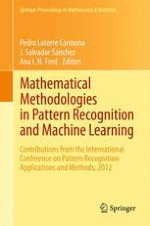This volume features key contributions from the International Conference on Pattern Recognition Applications and Methods, (ICPRAM 2012,) held in Vilamoura, Algarve, Portugal from February 6th-8th, 2012. The conference provided a major point of collaboration between researchers, engineers and practitioners in the areas of Pattern Recognition, both from theoretical and applied perspectives, with a focus on mathematical methodologies. Contributions describe applications of pattern recognition techniques to real-world problems, interdisciplinary research, and experimental and theoretical studies which yield new insights that provide key advances in the field.
This book will be suitable for scientists and researchers in optimization, numerical methods, computer science, statistics and for differential geometers and mathematical physicists.
